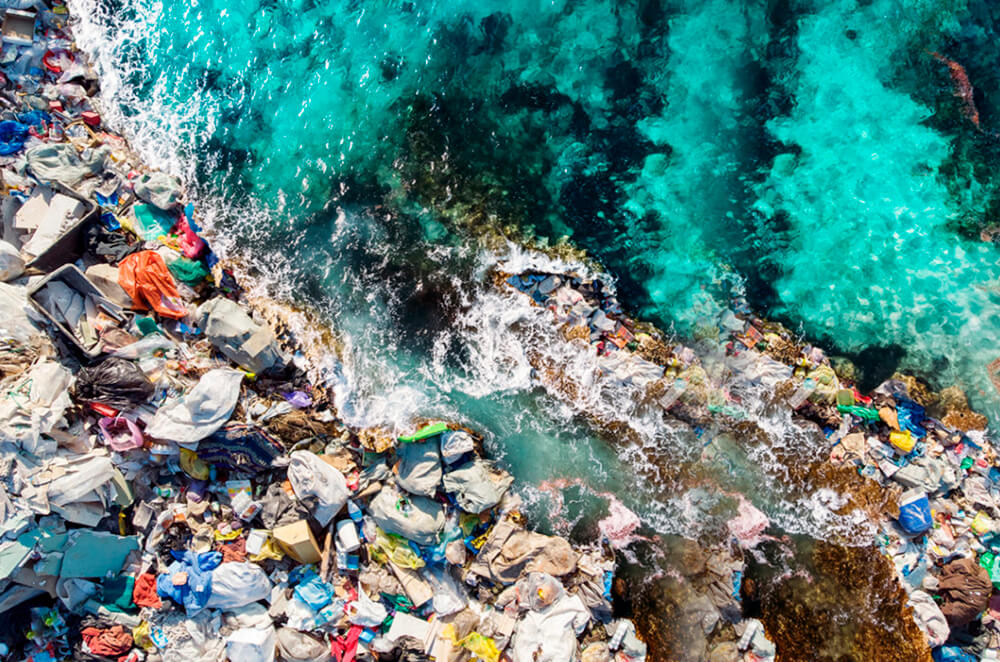
Plastics, water pollution and how to reduce your impact
Fecha: 17/10/2022
Since its invention in the fifties, plastic has become an intrinsic part of our society and economy. And we rely on it more and more each year; in fact, studies have found that the global production of plastic went up from 2 million tons in 1950, to approximately 400 million tons in 2018. And yet, we know that it is one of the most polluting materials out there and that it has a devastating impact on our natural resources in general, and on water in particular -since a vast majority of plastic waste ends up in our rivers and oceans.
The situation is critical, and statistics make clear just how much: According to Greenpeace over 8 million tons of plastic waste end up in the oceans each year; that’s the equivalent of 800 times the weight of the Eiffel Tower, or enough to cover the island of Manhattan 34 times.
In fact, the Ellen MacArthur Foundation has warned that “in a business-as-usual scenario, the ocean is expected to contain one tonne of plastic for every three tonnes of fish by 2025, and by 2050, more plastics than fish [by weight].”
Single Use Plastics: The Greater Evil
Bottles, caps, wrappers, shopping bags, straws, face masks, etc. These are all single use plastics that, as their name suggests, are made to be used for a very short period of time, more so when compared to the hundreds of years it takes for them to break down. Therefore, one of the first steps we can take to reduce our environmental impact is to eliminate single use plastics from our lives.
But it is no easy task. In the words of environmental journalist and author José Luis Gallego: “Living without plastics is a utopian idea. There’s no need to be extreme; instead we should aim for what is truly possible, and that starts by joining efforts and using our common sense.”
In this manner, and even though we are aware of our strong reliance on plastics, we can take certain simple measures to reduce water pollution by plastics.
Reduce, Reuse, Recycle
These three ‘Rs’ should become a mantra for anyone trying to care for our planet. Reduce your use of plastics whenever and as much as possible, reuse the plastics that you can't avoid and, finally, be sure to recycle them correctly.
Be a Conscious Consumer
As shoppers there are hundreds of choices we can make to reduce the amount of plastic in our homes. For example, you can choose a bamboo toothbrush instead of a plastic one, or switch your regular shampoo for a shampoo bar. Why? Because shampoo bars require less water for their production and don’t come in plastic containers.
Also, try to be aware of less obvious plastics, like textiles. It is estimated that just 1 synthetic fiber garment can release up to 2,000 microplastics in a single wash. There are options like Guppy Friend’s washing bags, which prevent the microplastics in your clothes from reaching our rivers and oceans. Or you can choose garments made from natural fibers like organic cotton, which doesn’t contain plastic and is produced with a more water efficient process.
Inform Yourself and Others
Although we all seem to understand the huge environmental and economic impact of plastics, we don’t normally bring this issue up in our daily conversations. It can be as easy as sharing tips and ideas on how to reduce our use of plastic. Taking care of the planet’s bodies of water is a responsibility we all share and which should be of great interest to us. If you can spark that environmental awareness in someone in your life, then you will have already done your part.
Be Active
You don’t need to be an environmental activist to actively care for the planet. Being aware of and participating in local and global initiatives centered around the issue of water pollution is also a form of activism. For example, this year World Cleanup Day is taking place on September 17, and 191 countries are going to participate with different activities to help clean up our rivers and oceans.
